How to Plant, Grow, and Care for Graptosedum
Graptosedum brings life and bright, bold color to your succulent collection. Join Gardening expert Rachel Garcia as she explains everything you need to know to grow plants in this genus.
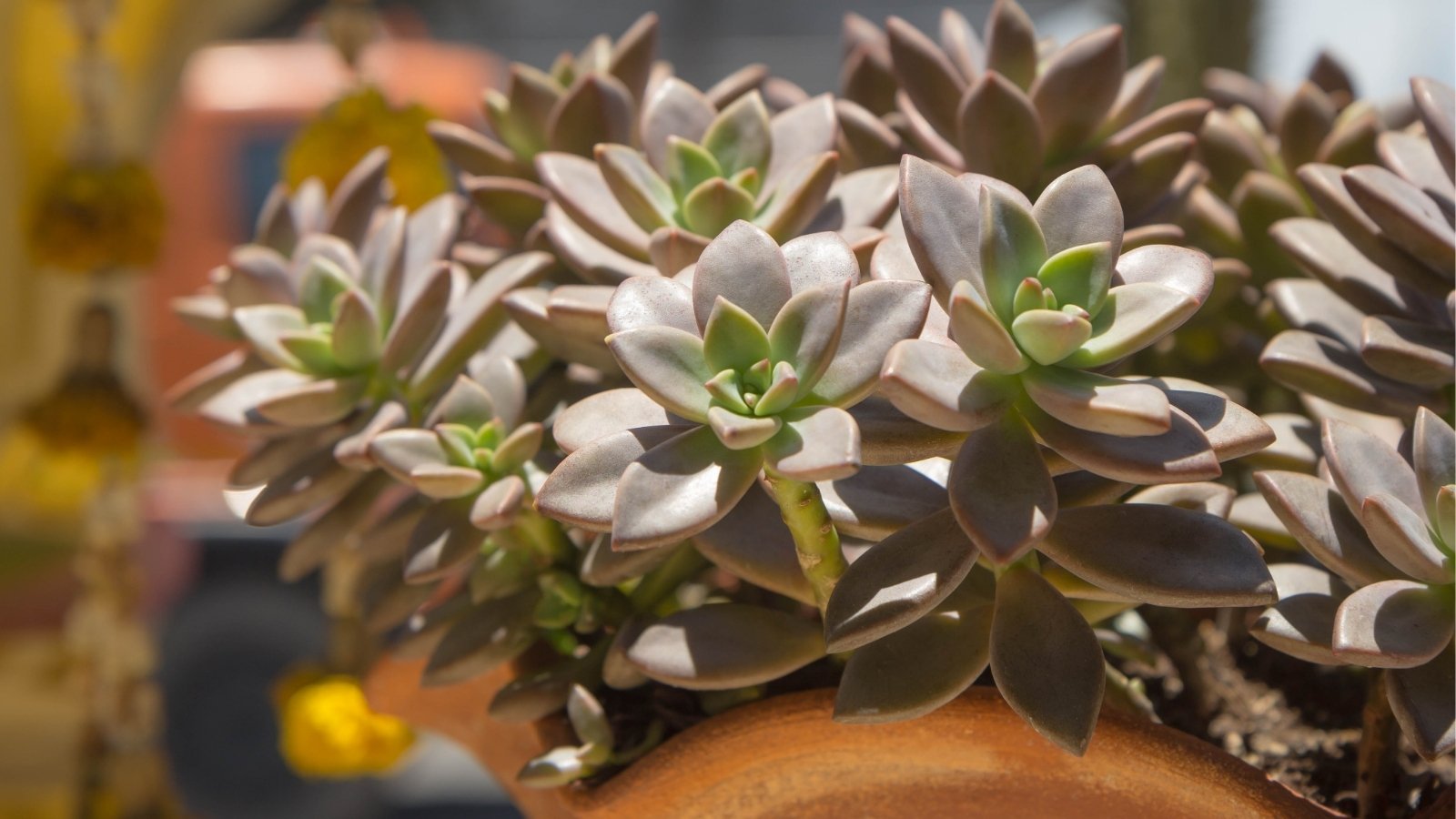
Contents
Graptosedum is a classic succulent genus that’s fun and easy to grow. You’ve probably seen these succulents around, as their captivating rosettes have been popular in garden stores for years.
The name may sound like a resemblance to grapes, but this succulent actually closely resembles plants in the Echeveria genus. Graptosedum’s compact leaves spiral around the stem and create rosettes at the top, just like Echeveria, despite being completely different genera.
Graptosedum comes in a wide array of hues, from purple to orange to white. This genus is sure to add color to your garden.
Overview
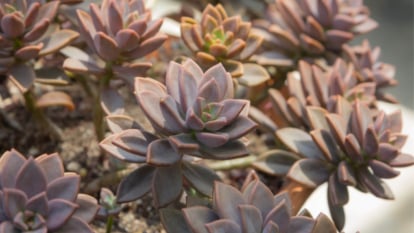
|
Plant Type
Succulent
Family
Crassulaceae
Genus
Graptosedum
|
Species
Graptosedum spp.
Exposure
Full sun
Height
6″-12″
|
Watering Requirements
Low
Maintenance
Low
Soil Type
Succulent mix
|
What is Graptosedum?
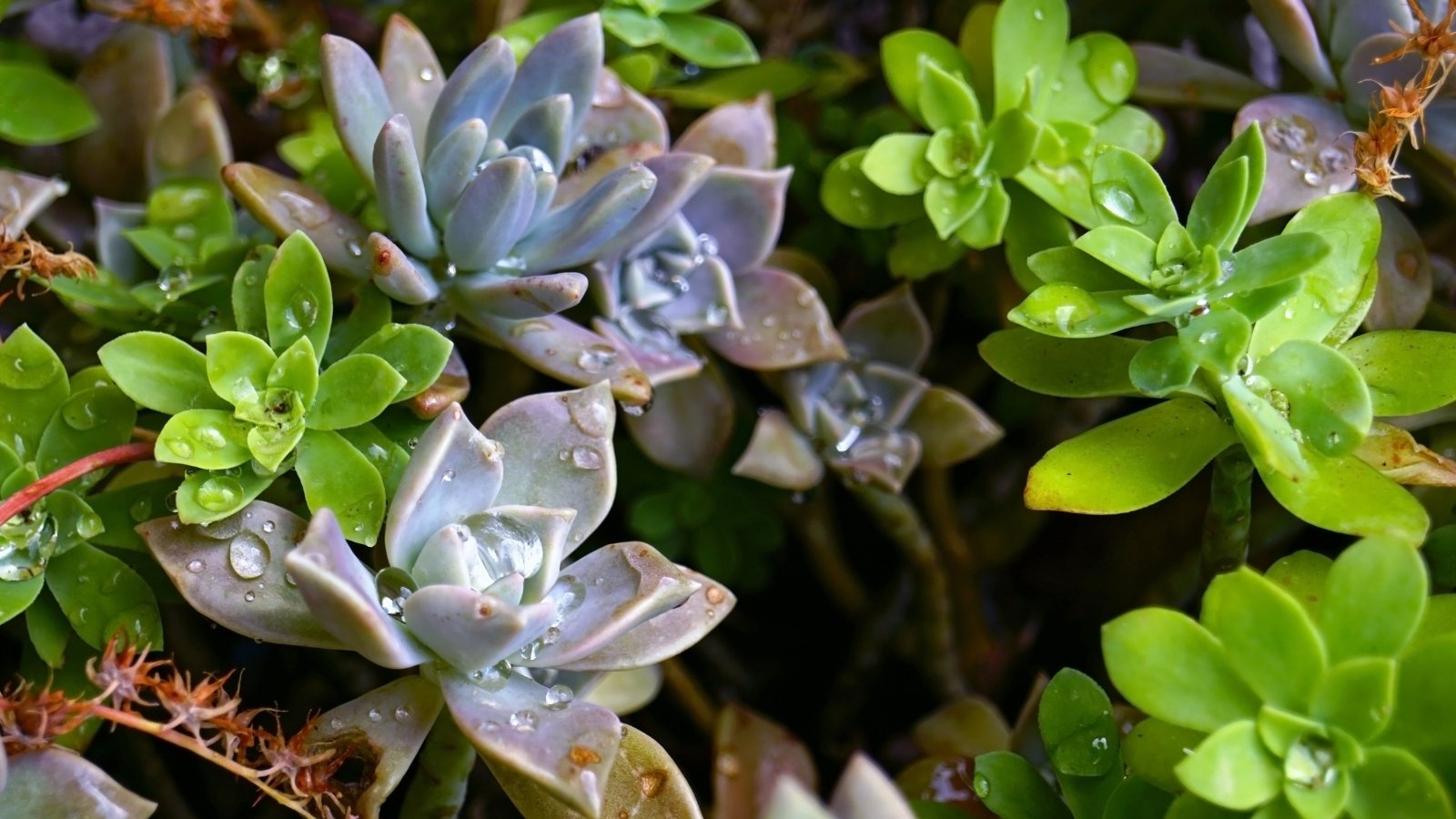
The genus Graptosedum is a hybrid of two succulent genera: Graptopetalum and Sedum. You may also see it written as xGraptosedum. It combines the best characteristics of both genera to create a popular succulent genus beloved for its ease of care and impressive color.
Although this genus has many varieties, the care is universal.
Types of Graptosedum
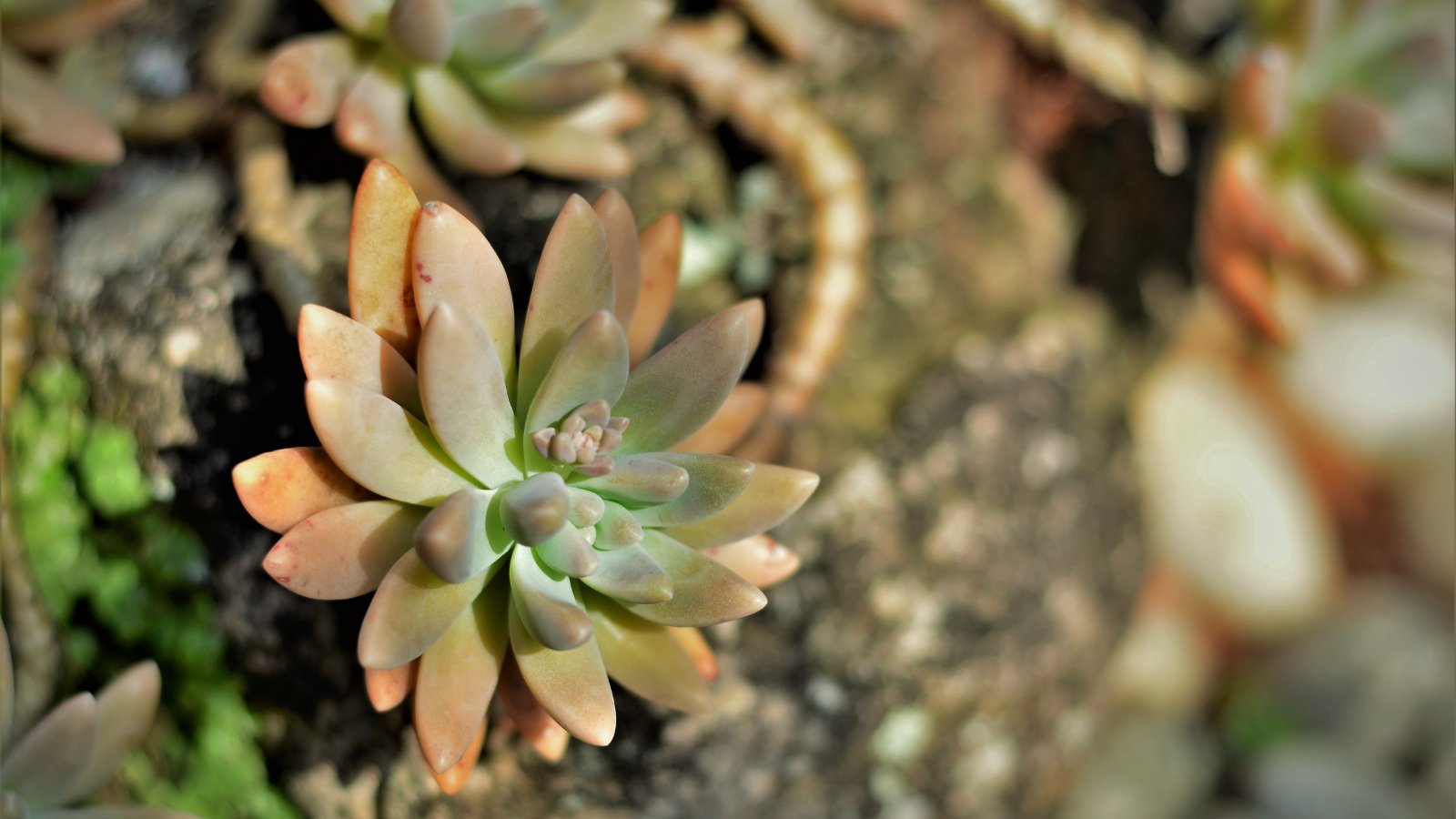
There are numerous varieties of Graptosedum. They’re often confused with each other, so let’s pick apart the most common ones.
Graptosedum ‘Vera Higgins’
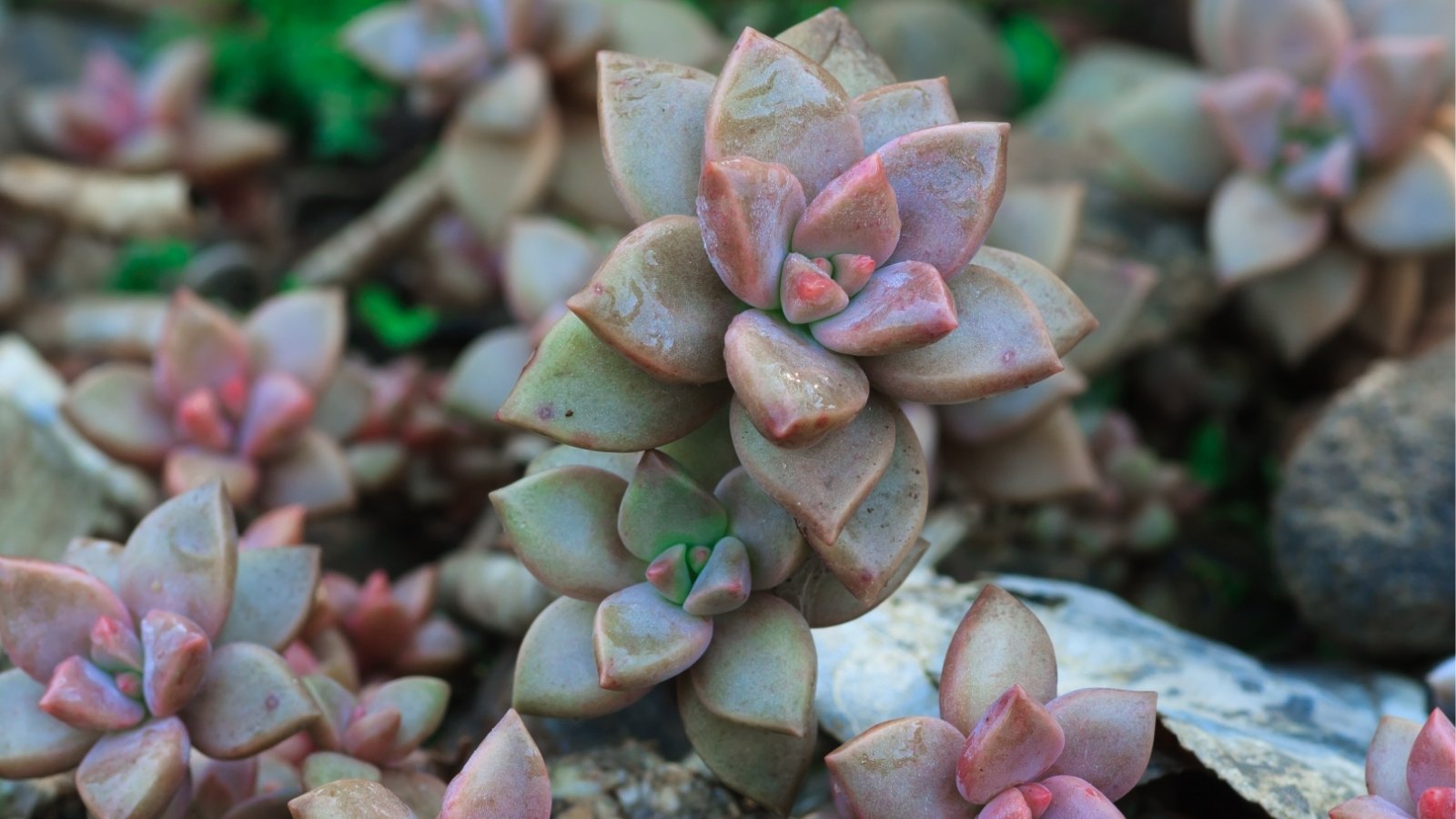
This variety is well-known for its deep burgundy color. The color comes from exposure to cool temperatures, so the succulent is green at first. Although the burgundy is beautiful, don’t be tempted to lower the temperature too much.
Graptosedum ‘Bronze’
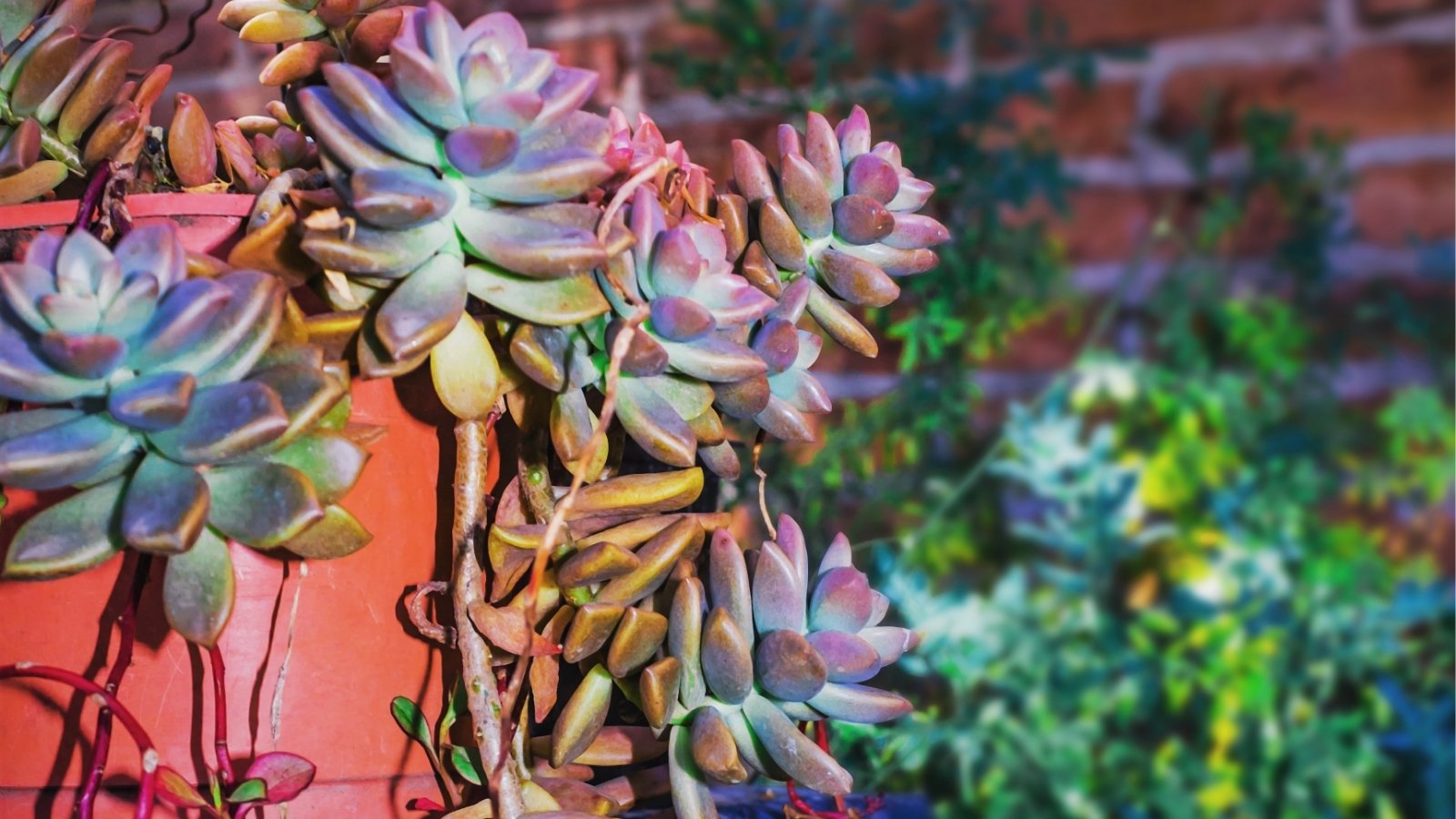
‘Bronze’ is often grouped with the ‘Vera Higgins’ variety. The only major difference is in color. ‘Vera Higgins’ is burgundy while ‘Bronze’ is, you guessed it, bronze. This variety can handle a minimum temperature of 15°F (-9°C). Because of this, it can often survive outdoors in USDA Zone 8b.
Unlike other varieties, the leaves of ‘Bronze’ grow abundantly below the rosettes. The cylindrical shape this makes gives the succulent a fuller appearance.
Graptosedum ‘Ghosty’
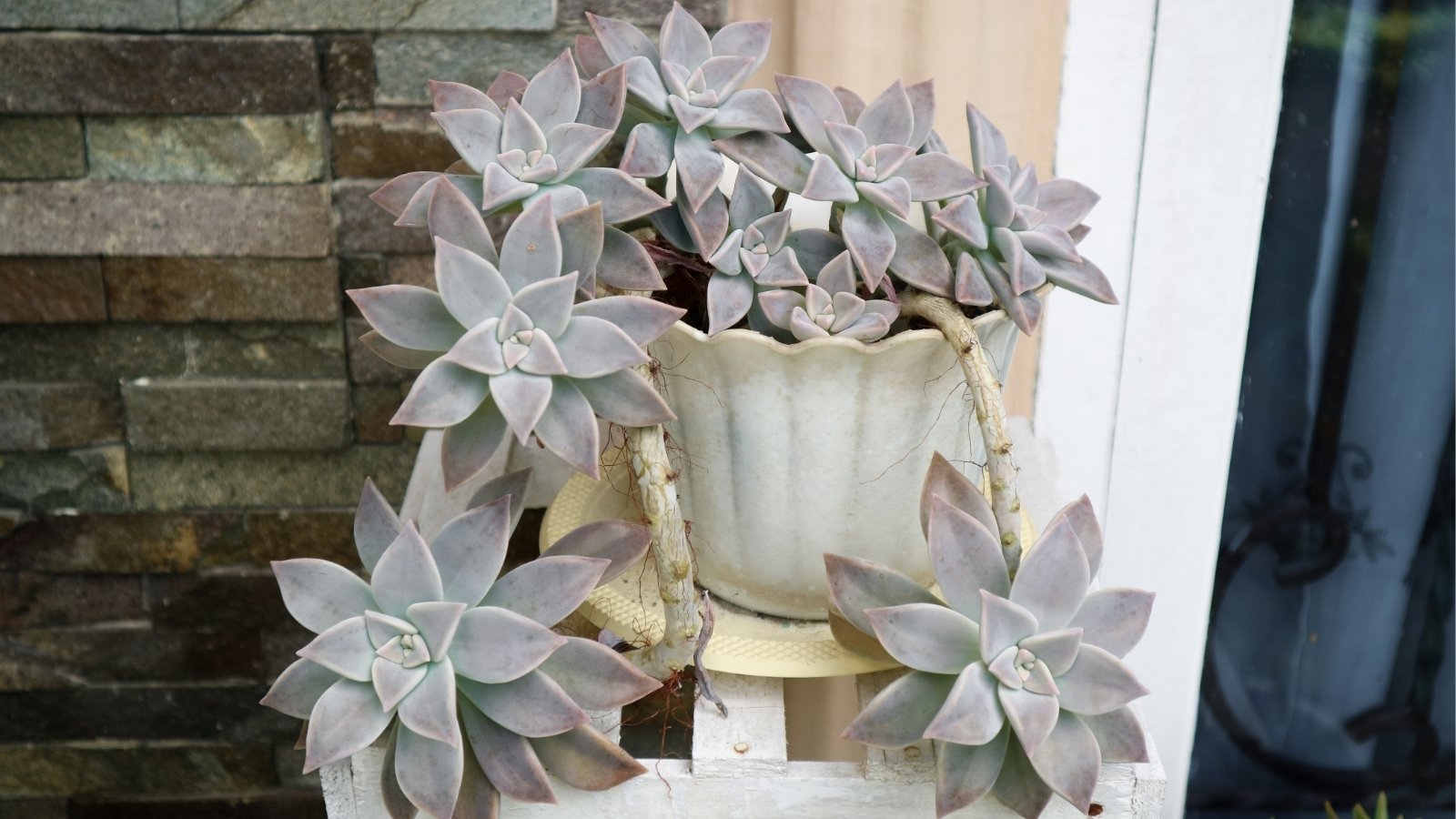
This ghost of a succulent is just what you’d expect. The leaves are pale with hints of blue, gray, and pink. It’s very similar to the Graptopetalum paraguayense (ghost plant). The two are differentiated by flower color: ghost plant has yellow hues and ‘Ghosty’ has white hues.
Graptosedum ‘California Sunset’
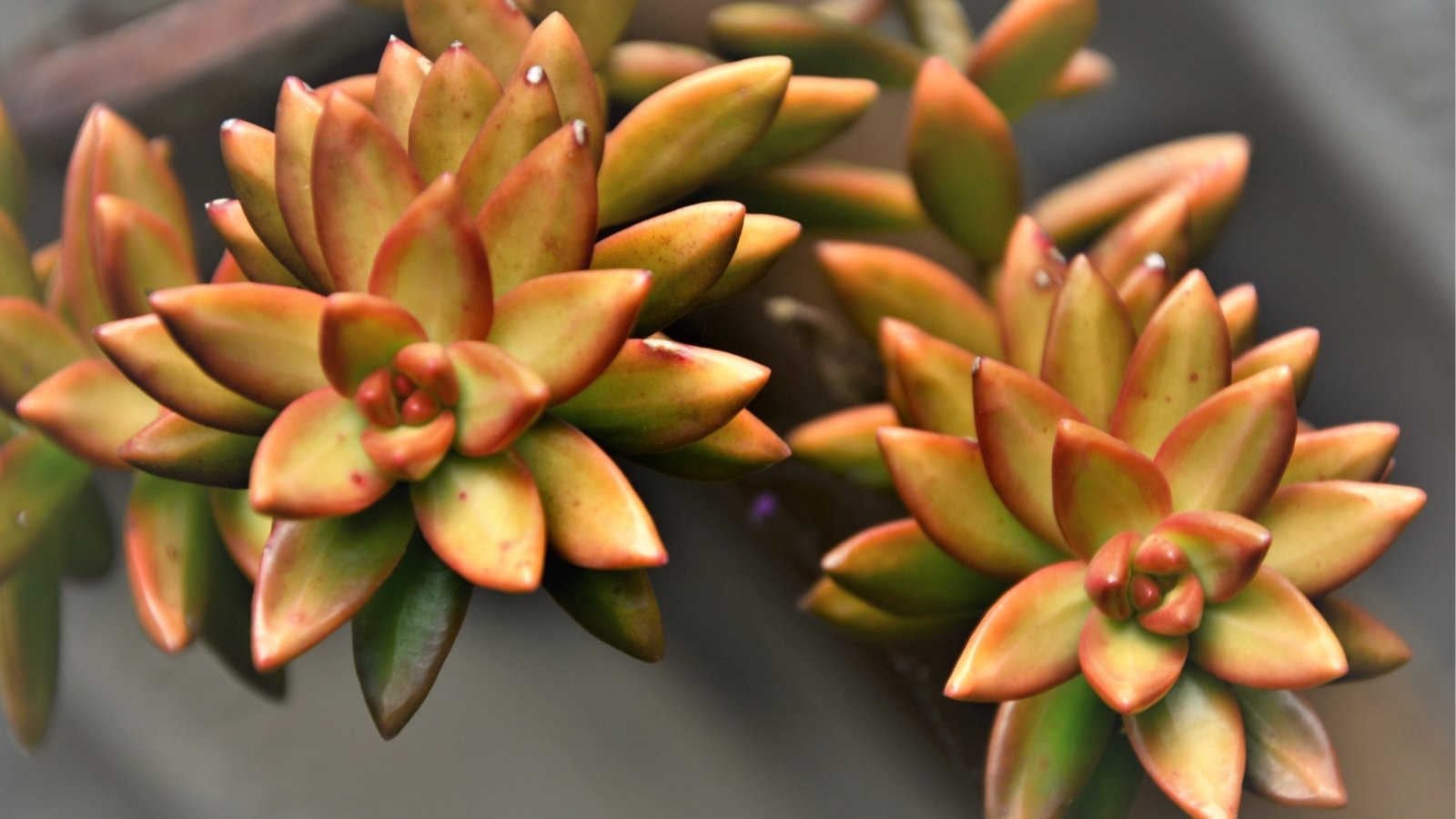
One of the most dazzling succulents, ‘California Sunset’ is a combination of orange and pink. The leaves start gray and then change color as they mature. A fully-grown rosette will resemble a vibrant sunset in color.
Graptosedum ‘Francesco Baldi’
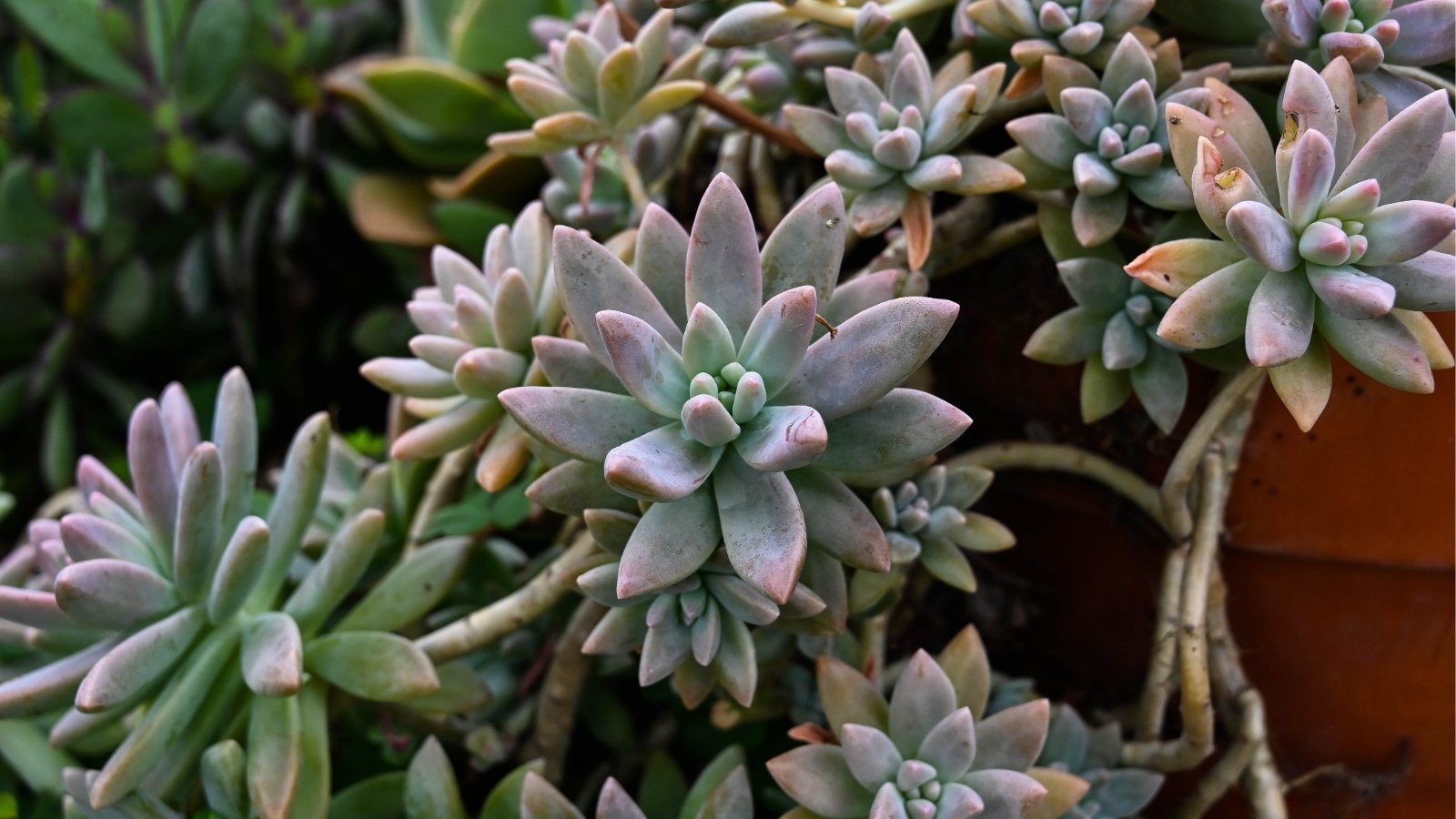
This is a sprawling succulent with long, hanging stems and rosettes close to the ground. Its leaves are blue-gray, but turn pink in the sun. During the winter, they may even become purplish-brown.
‘Francesco Baldi’ has a longer cultivar name: Graptosedum ‘Francesco Baldi’ f. cristata. Don’t let the long name bore you though, as this succulent is pretty cool. The rosettes grow on top of a crest, which is a thick, cactus-like stem. This succulent is sure to catch attention.
Graptosedum ‘Darley Sunshine’
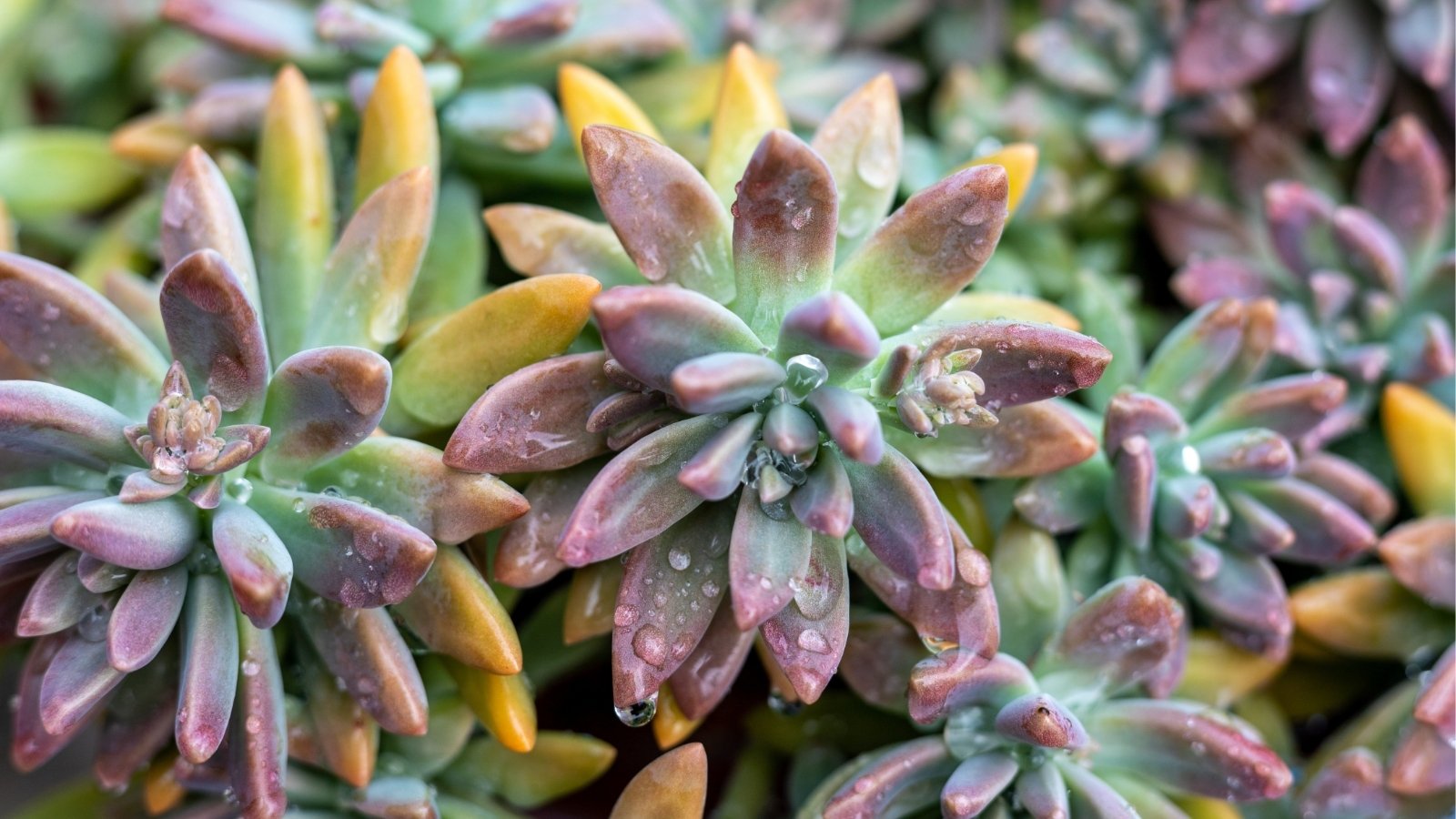
This dainty Graptosedum has thick, long leaves with pink tips. It produces lots of offsets, which are great for propagation.
Planting
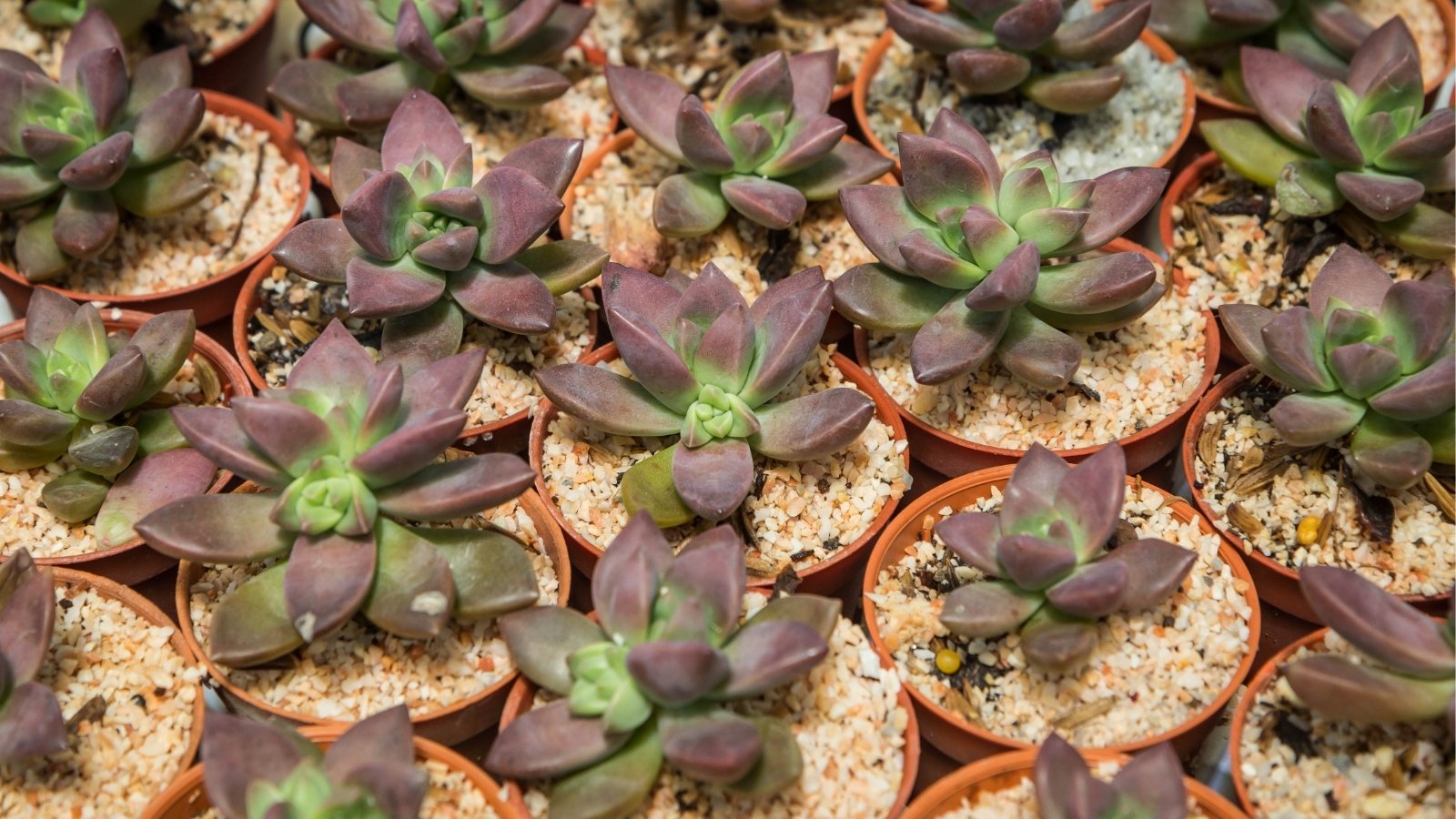
Graptosedum are sprawling plants. Because of this, they’re great as ground covers or in hanging baskets. You’ll see the most growth during spring and fall. In the spring, you may be rewarded with white flowers – a sign that your Graptosedum is healthy.
Because sunlight is essential for this plant, you’ll get the best results growing outside. USDA Zones 9-11 can sustain Graptosedum yearlong. In other areas, plant your succulent in a container that can be brought indoors when it’s cold out. Avoid leaving your Graptosedum in temperatures below 30°F (-1°C).
How to Grow
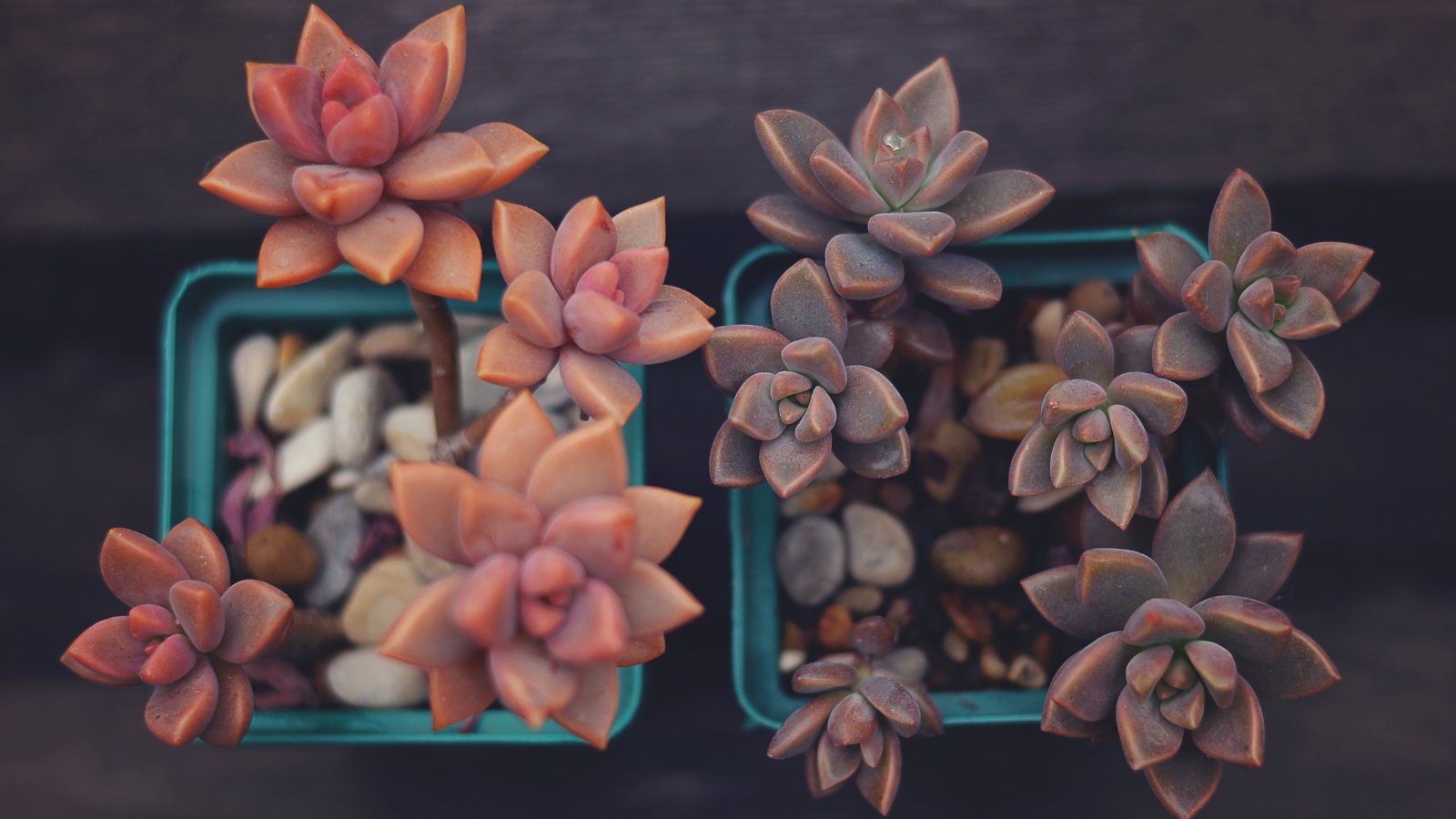
Graptosedum are fairly low-maintenance. With these guidelines, all gardeners can have success with them.
Light
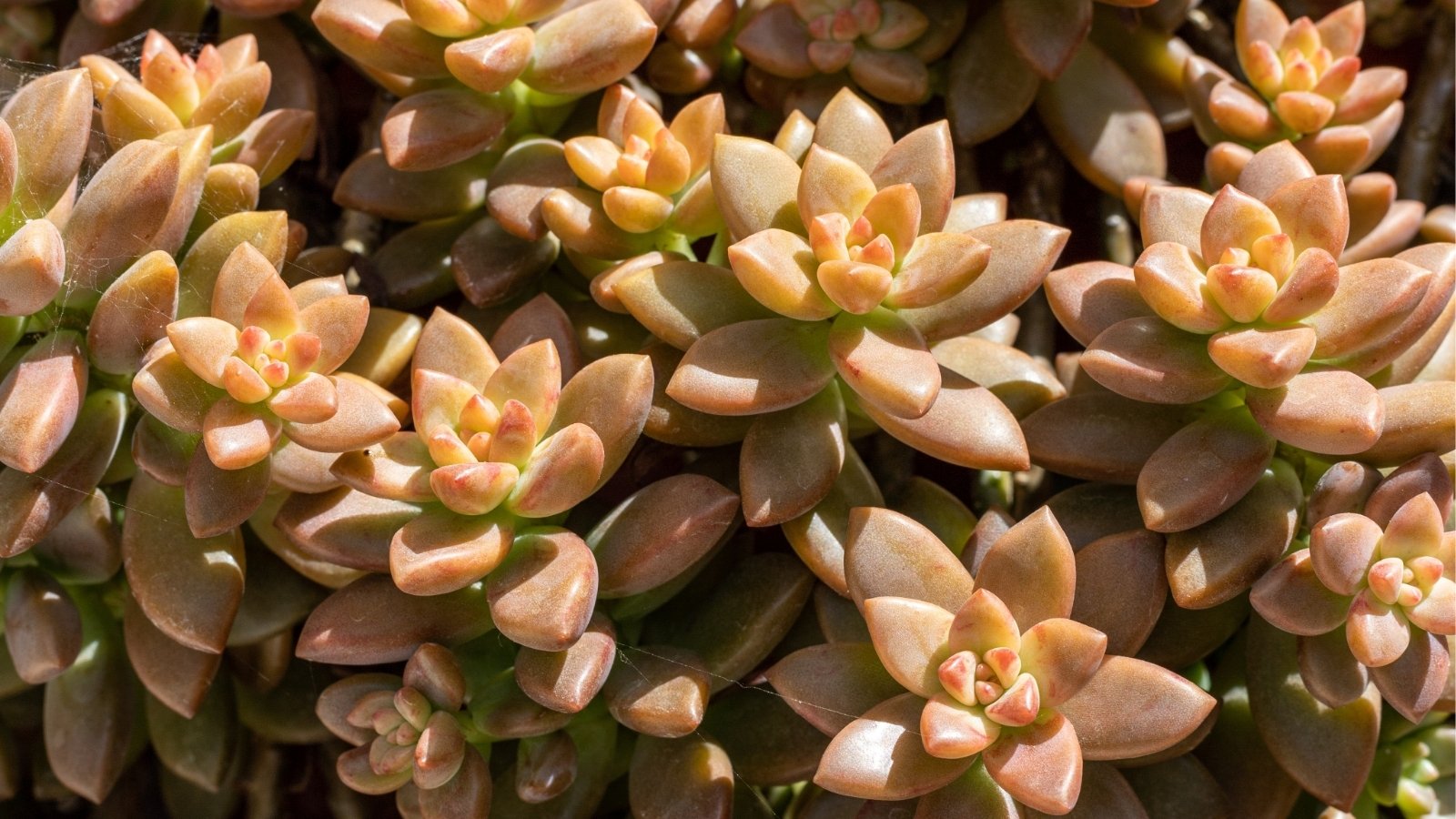
Graptosedum love sunlight. They need six hours of full sun a day to thrive. Depending on the variety, you may see their colors deepen with the light.
Keep in mind that too much of a good thing is detrimental to plants. Graptosedum can get sunburned. To avoid this, keep your succulent out of direct sun in harsh conditions and let it adjust to new locations slowly.
Morning sunlight is ideal for Graptosedum because it’s bright but not too direct. Plant your succulent where it can get light in the morning and partial shade in the afternoon.
Water
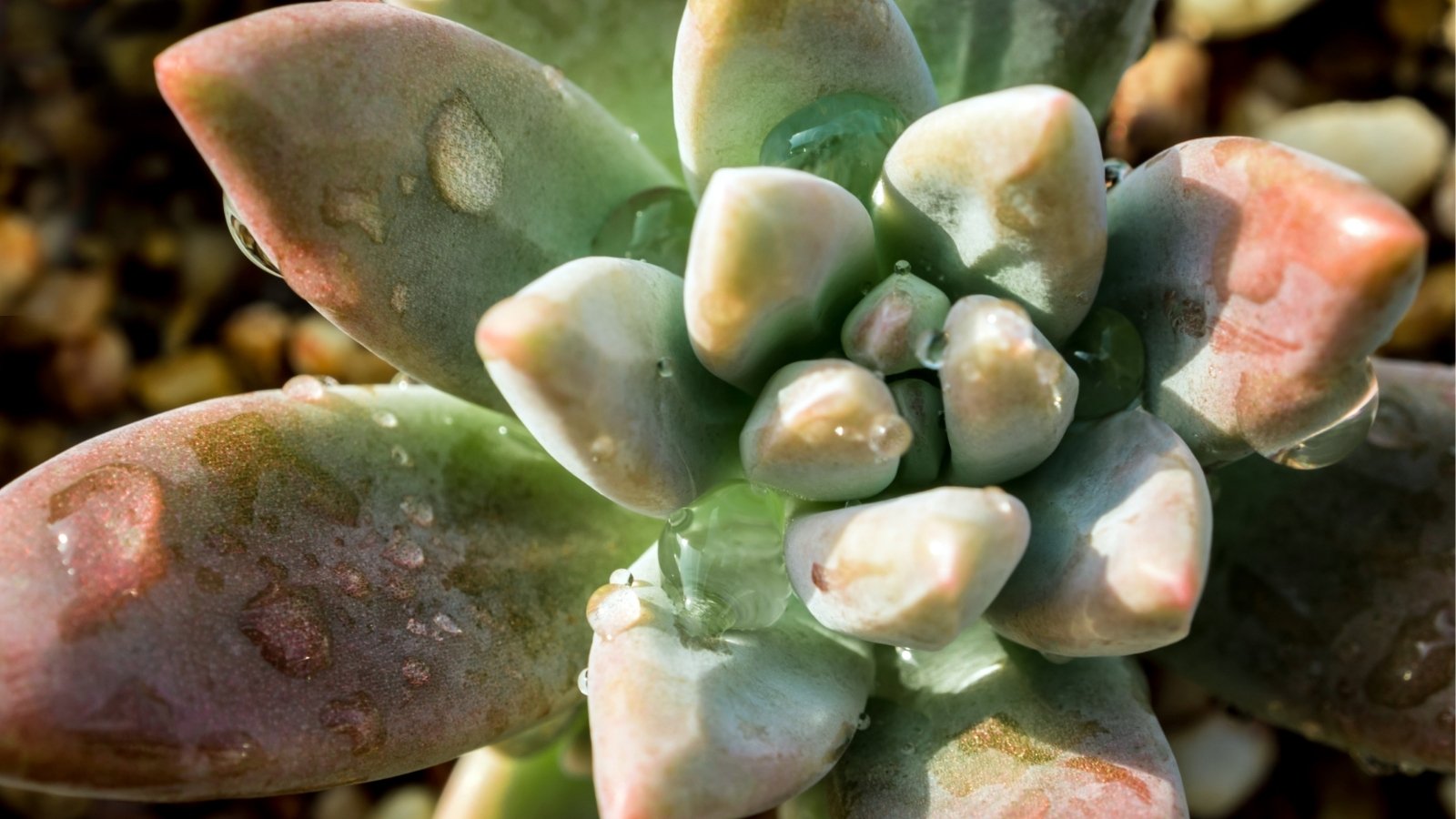
Water your Graptosedum consistently during the growing season and cut back in the winter. When watering, completely soak the soil. This will allow your Graptosedum to store what it needs for the next drought.
Mimic this drought by letting the soil dry out completely before watering again. You can even leave the soil dry for several days without negative impacts on growth.
Soil
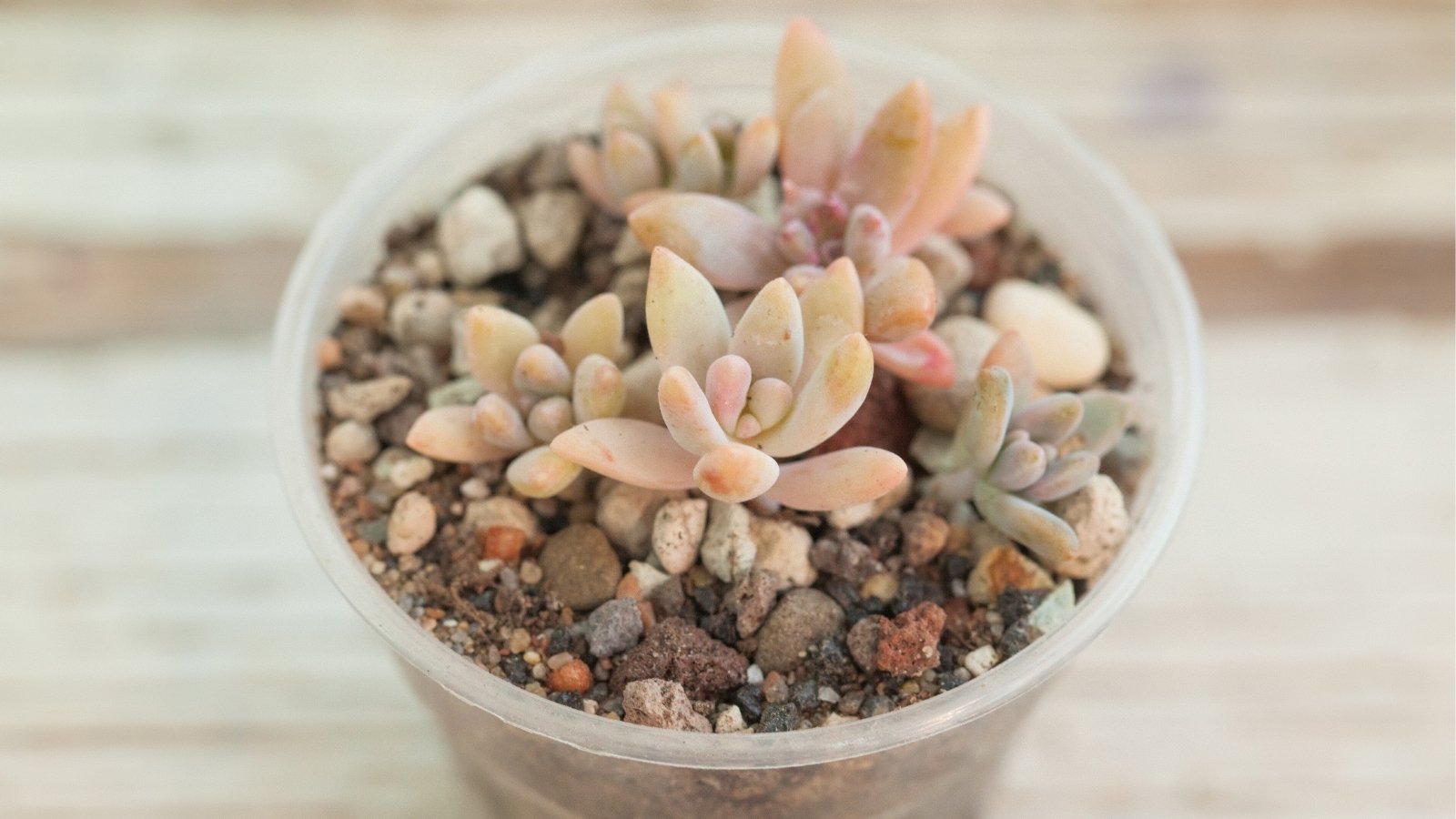
Well-draining soil is crucial for Graptosedum. If left sitting in water, the succulent will become mushy and rot. Choose a pre-made succulent soil or mix your own. The ratio of soil to perlite and sand should be at least 1:1.
If you notice the soil isn’t draining well, mix in more perlite or sand as soon as possible.
Temperature & Humidity
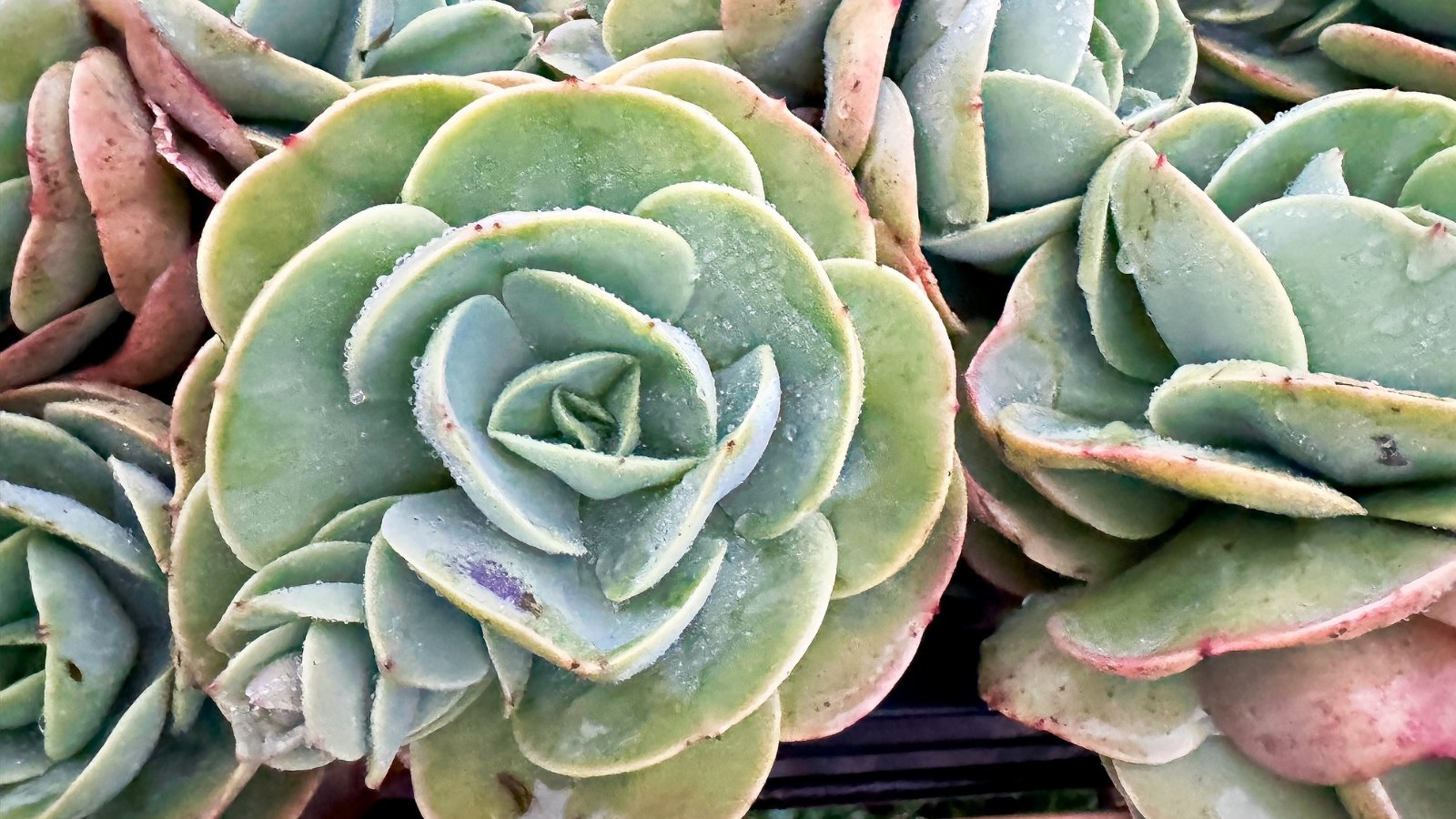
These desert plants appreciate warmth and don’t do well in cooler regions. Some are hardier than others, but it’s generally best to avoid growing outdoors in USDA Zones 8 and below.
If you want to keep them outdoors to maximize sunlight exposure, plant them in containers and bring them indoors when temperatures drop in fall and winter.
While dry conditions are preferred, Graptosedum isn’t fussy about humidity. Higher humidity can increase the risk of fungal disease, so keep an eye out for signs of struggle.
Fertilizing
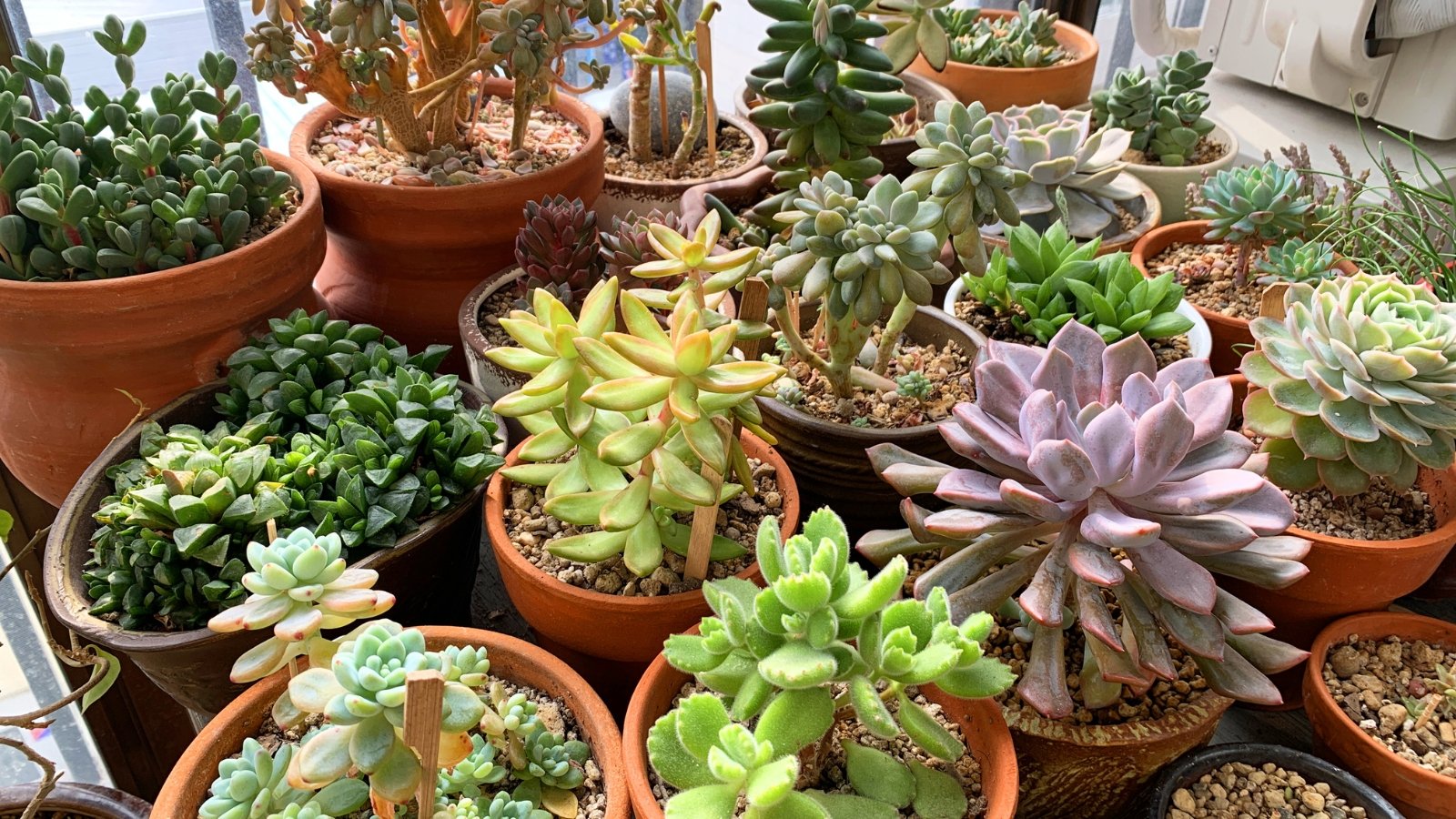
Applying fertilizer during the growing season will give your Graptosedum a boost. You can do so at the beginning of spring and fall, or throughout the growing season using a lower strength dose. Do not fertilize in winter during dormancy.
Succulents prefer either balanced or low-nitrogen fertilizer. For easy application, choose a liquid feed diluted to a quarter strength to avoid overfertilizing.
Maintenance
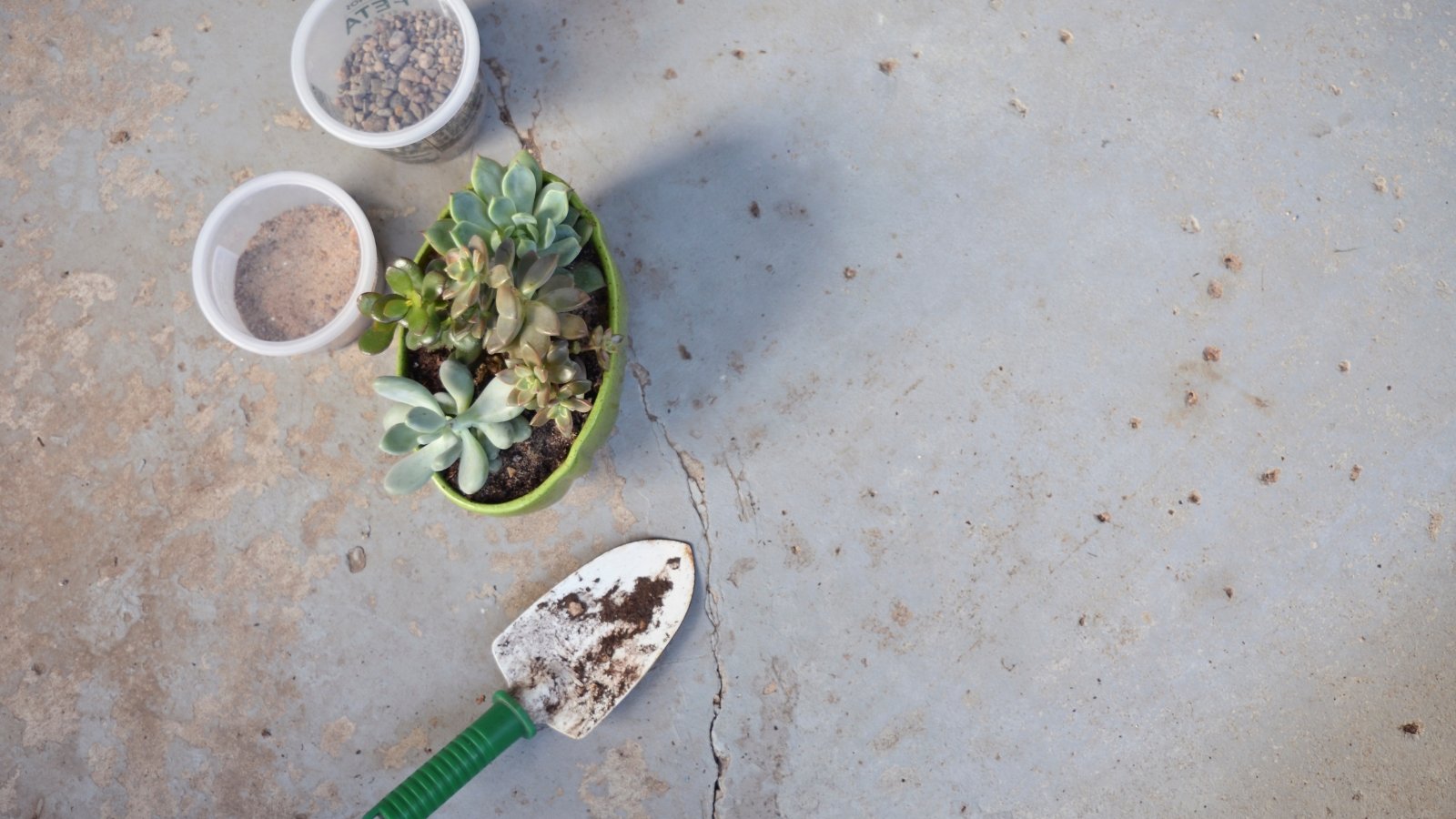
If you’re growing Graptosedum in a container, it may need to be repotted as it grows. Remember, it’s normal for Graptosedum to hang over the edge of the container. You’ll need to watch the roots to tell if the plant has enough space.
When repotting, use new, dry soil. Once the succulent is settled, don’t water it for about a week. If the roots were damaged while repotting, they could rot in the water. Waiting gives them time to heal.
A common problem with succulents is etiolation. This is when the stems stretch out in search of sunlight. Luckily, it’s easily fixed in Graptosedum. Pruning back a stretched stem will allow new rosettes to grow from the stump. This will help the plant grow more compact (provided you give it more sun).
Prune your Graptosedum with clean clippers. Cut the stem close to the soil and keep the area dry. Instead of throwing away the cutting, try out propagation instead!
Propagation
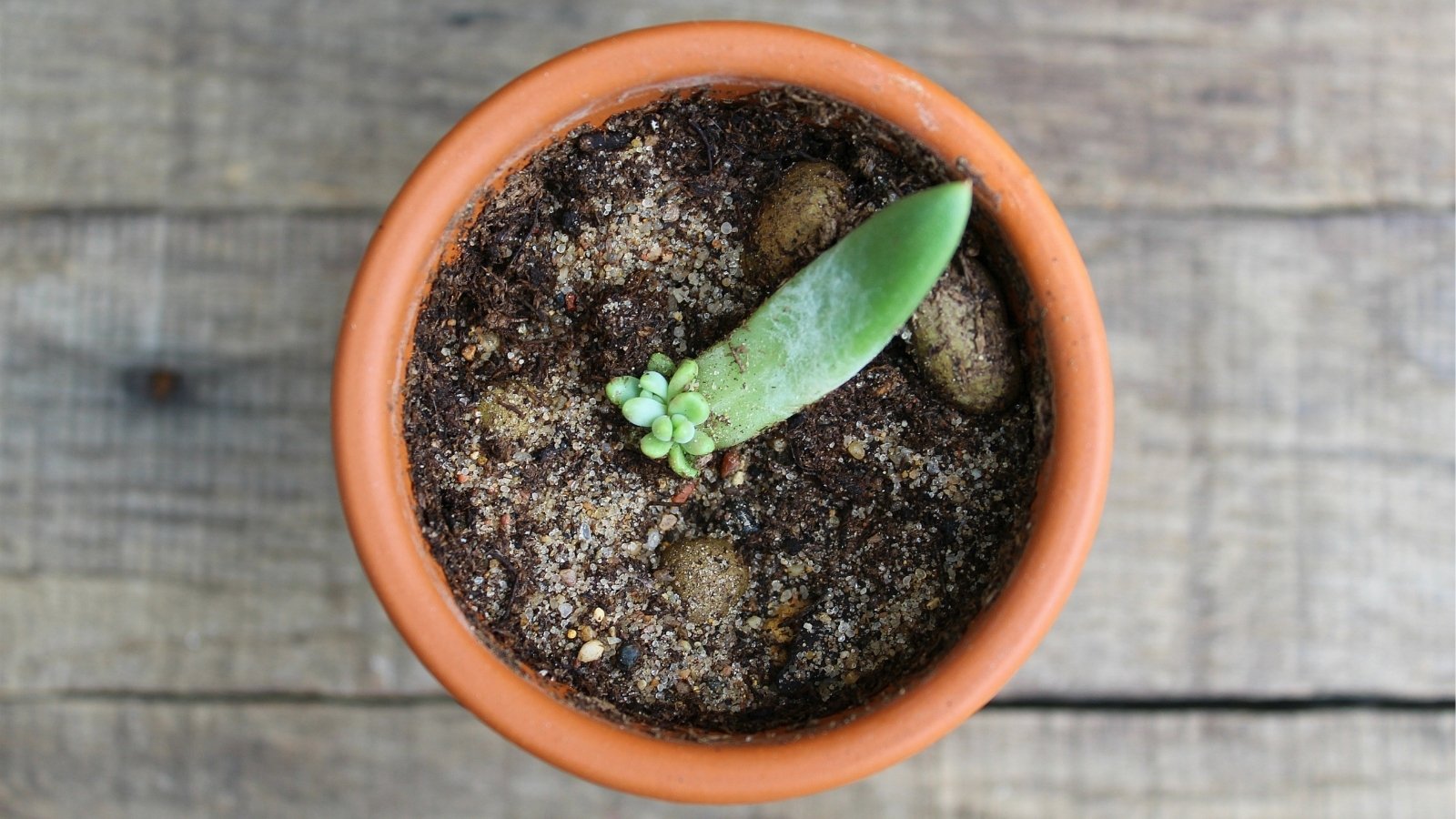
Graptosedum can be easily propagated by stem and leaf cuttings.
To take leaf cuttings, simply pull or twist them off the stem. Be gentle though – if part of the leaf is left behind, it may not grow. For stem cuttings, cut about an inch below the rosette. Remove any leaves from the bottom of the cutting.
Let your cuttings dry out for a few days. You’ll see the cut end ‘scab over’. Once dry, place them on well-draining soil (stem cuttings can be inserted in the soil). Keep the soil and cutting moist. The cutting will send out roots and leaf cuttings will grow new rosettes. Once your new plant is established, resume its normal watering schedule.
Graptosedum also produces offsets (long stems that grow outwards). These can be propagated just like stem cuttings. If left alone, they might root by themselves.
Common Problems
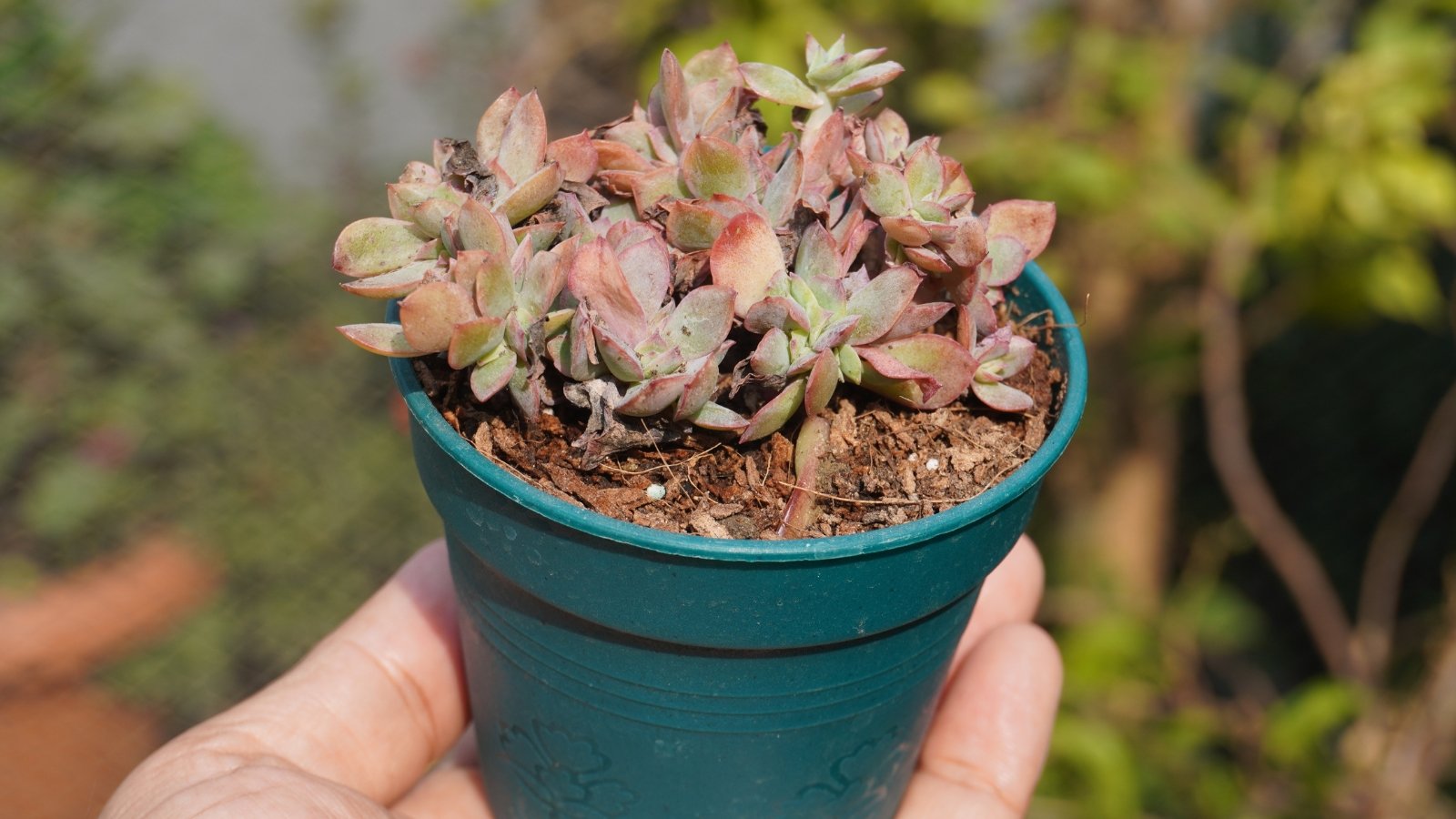
Graptosedum have no more problems than most other succulents. If you prevent and watch for the following, your succulent should stay healthy and happy.
Etiolation
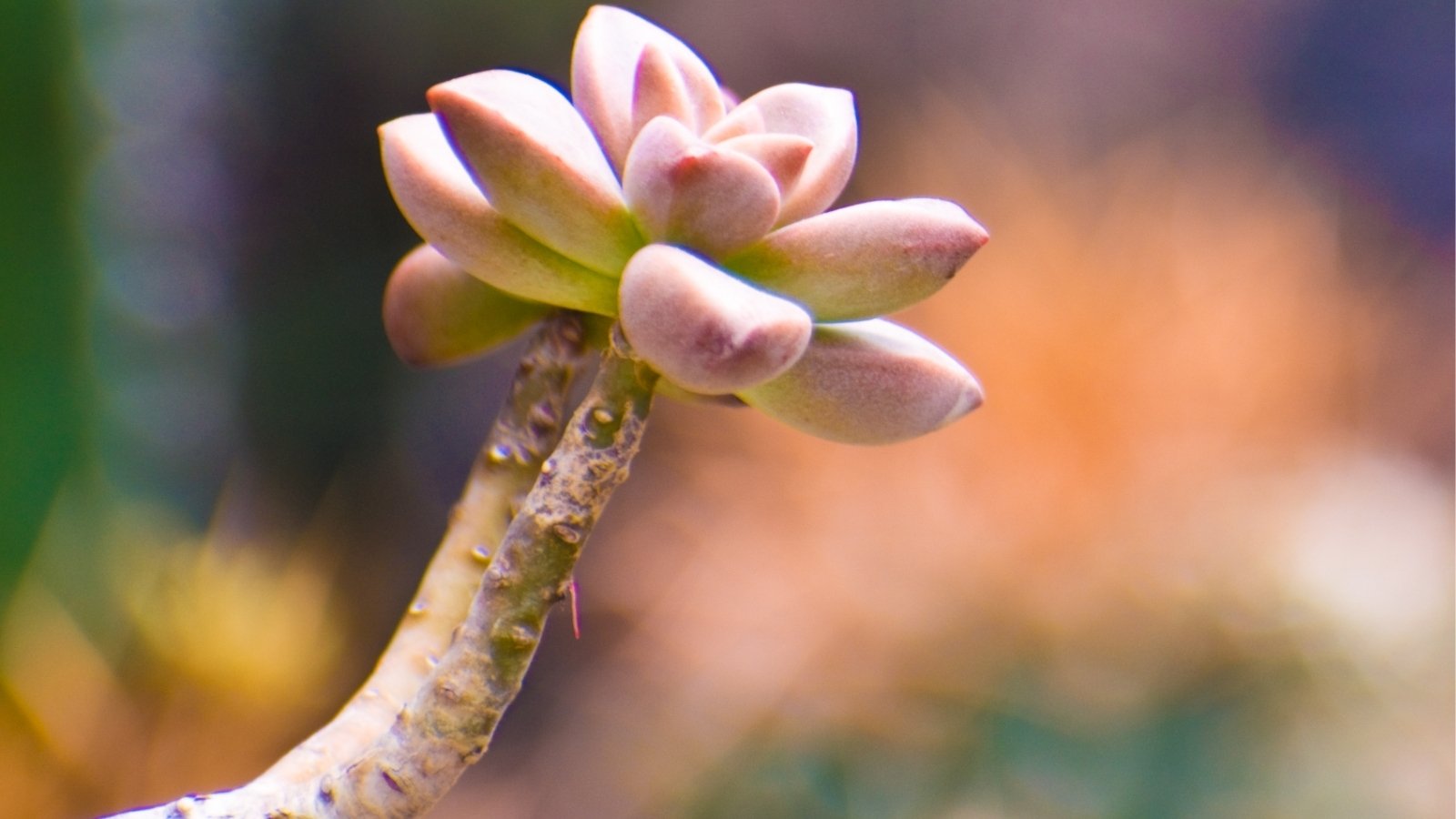
Etiolation (stretching) is a frequent problem in succulents. Prevent it by giving your Graptosedum plenty of sunlight. If your plant is already stretched, prune back the stems so they can regrow close to the ground. Move your Graptosedum to a new location so it won’t stretch again.
Dropping Leaves
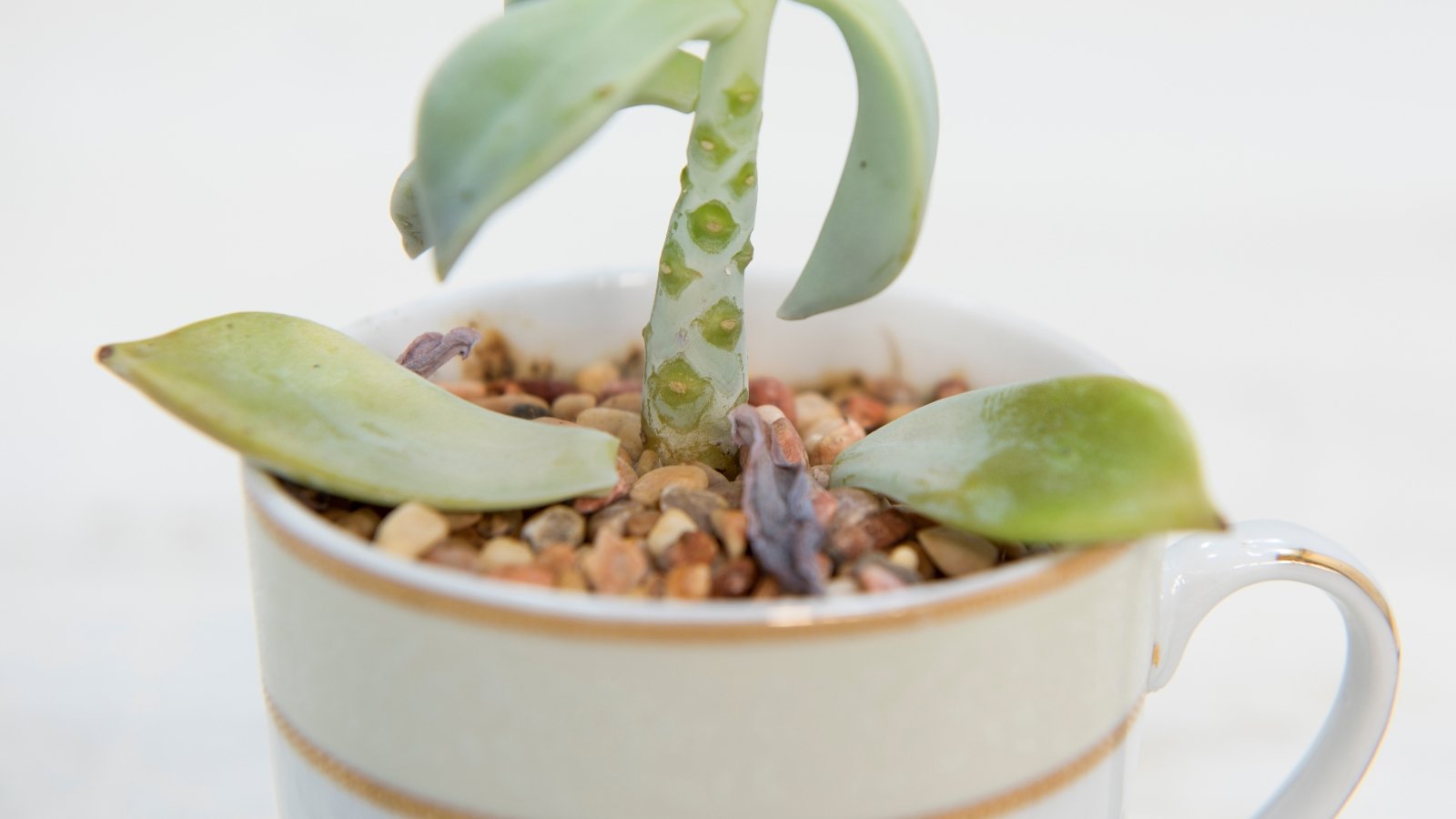
Succulent enthusiasts often notice that the leaves are falling off their plants. It’s natural for old leaves towards the bottom to drop.
If the fallen leaves are newer ones from the top, your succulent is probably overwatered. You’ll need to let the soil dry out more between waterings. Also, observe the soil when you water it and note how fast it drains. Adjust the texture as needed.
Discoloration
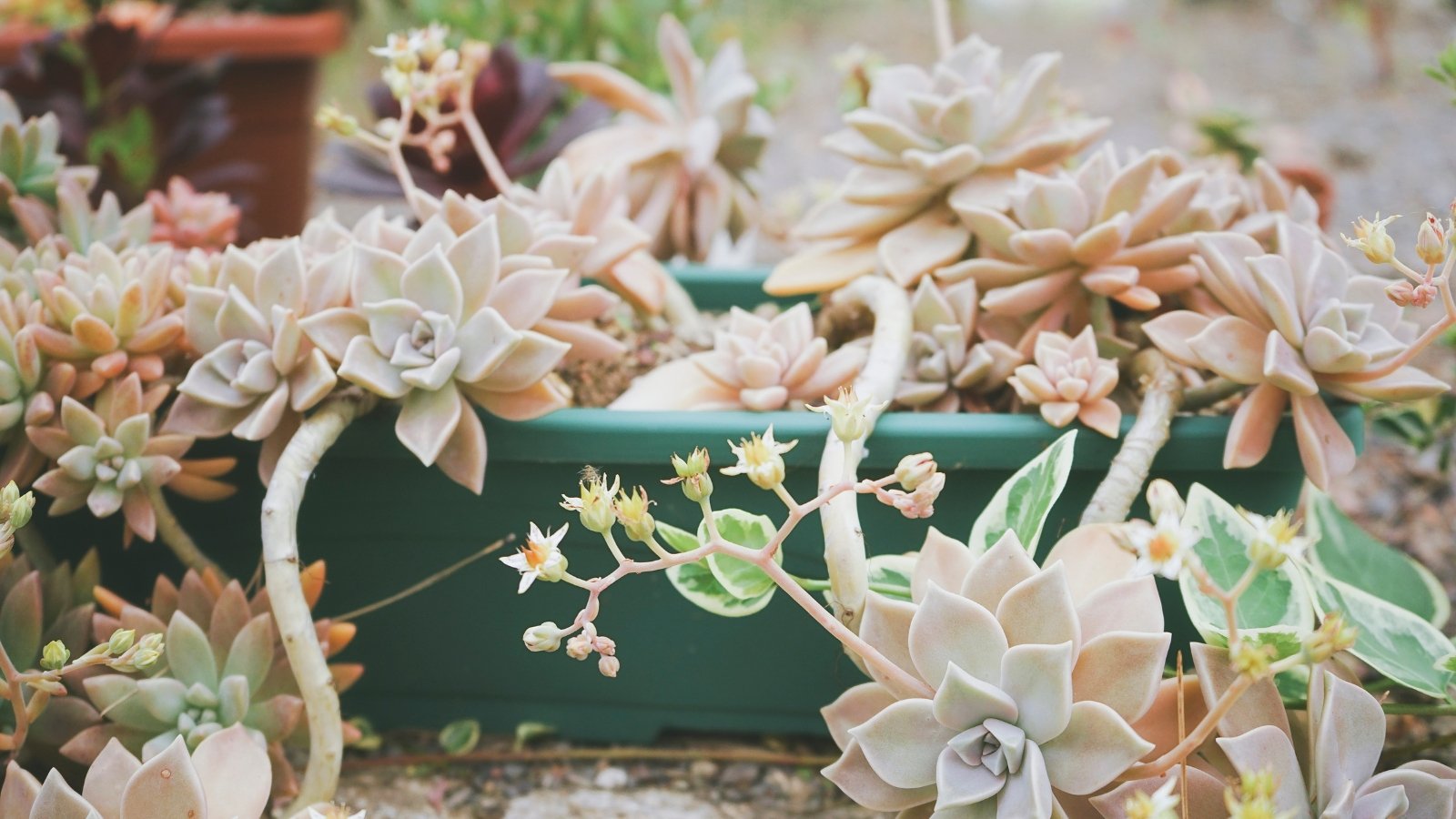
When underwatered, Graptosedum leaves may become discolored and wrinkly. Usually, if you give it a good soak, the plant will return to normal.
Pests
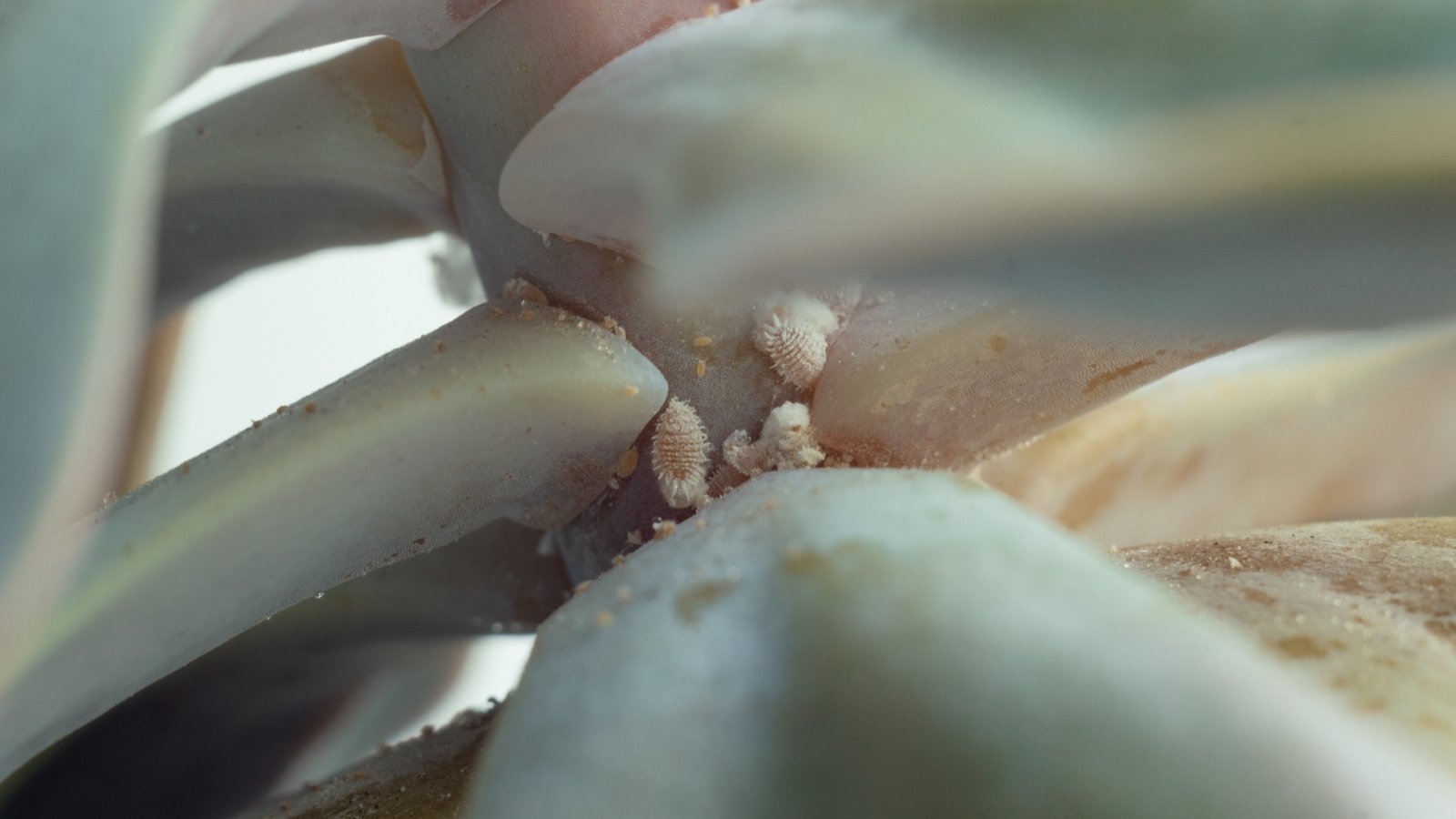
Mealybugs and aphids are both insects that feed on plant sap. Symptoms of an infestation include yellow wilted leaves, black sooty mold, and the appearance of ants.
Both pests can be removed by spritzing the succulent with insecticidal soap. For a small number of mealybugs, dab each insect with a cotton swab soaked in rubbing alcohol.
Diseases

The most common affliction for Graptosedum – and most succulents – is rot. This happens when the plant is constantly moist and begins to decay. Rot is usually in the roots but can occur in any part of the succulent.
Prevent rot by keeping your Graptosedum dry. When watering, try not to splash any water on the plant itself. Most importantly, use sandy soil that won’t retain too much water.
If your Graptosedum has started to rot, save it by cutting off the affected sections with a sterile knife. Let the wounds dry out for a few days before replanting in new, dry soil. If your succulent is too rotted to save, clip off any healthy leaves or stems for propagation.
Frequently Asked Questions
Is Graptosedum toxic to pets?
No, Graptosedum is safe for pets and humans.
What’s the difference between Graptosedum and Echeveria?
Graptosedum has thick leaves that are usually tinged with shades of red. Echeveria has thin, spoon-shaped leaves that are often pointy on the ends.
Final Thoughts
If you’re looking for a new succulent genus to explore, Graptosedum is a great option, even for beginners. Choose one of the colorful varieties and propagate often to expand your collection.








